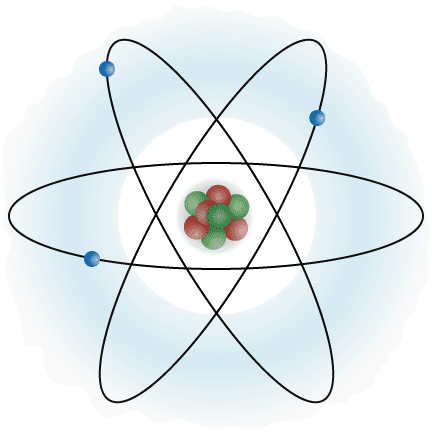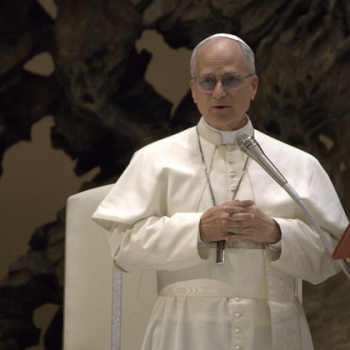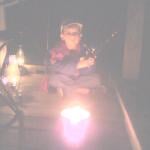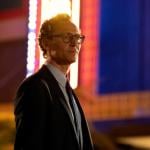
(Wikimedia Commons public domain image)
Herewith, I share some more notes that have been inspired by and/or are based upon Michael Guillen’s Believing is Seeing: A Physicist Explains How Science Shattered His Atheism and Revealed the Necessity of Faith (Carol Stream, IL: Tyndale Refresh, 2021). Dr. Guillen, who grew up in East Los Angeles (not too terribly far from where I myself was raised, although he’s a few years younger than I am) before studying mathematics, physics, and astronomy at UCLA and Cornell, taught physics for eight years at Harvard University before becoming the chief science editor for ABC News. They constitute an initial hasty and unpolished pass on the topic that they address:
Many of the most basic concepts in physics are almost impossible to conceive. For example: In 1954, just a year before his death, Albert Einstein confided in his old friend Michele Besso that “The whole fifty years of conscious brooding have not brought me nearer to the answer to the question, ‘What are light quanta?’ Nowadays every scalawag believes he knows what they are, but he deceives himself.” (125)
Or consider the electron. Physicists once believed that it was simply a particle. In fact, although this may have been out of date among educated physicists by the time I was learning about electrons and neutrons and protons in elementary school and high school, it’s how I myself pictured them at the time. I thought of atoms as being, effectively, little “solar systems,” in which the nucleus was the sun and the electrons were the planets. (Dr. Guillen, who is somewhat younger than I am, says on page 126 of Believing is Seeing that his middle school science teacher taught him precisely that.) The notion was reasonable enough. But it’s false. Thanks largely to the work of a young French nobleman and physicist, Louis-Victor Pierre Raymond de Broglie, we now know that, like photons, electrons behave simultaneously like particles and waves.
And then there’s this curious phenomenon, which Guillen illustrates with the idea of a twenty-story building: To go from its ground floor to its twentieth floor, you need to cover the distance between them. (It makes no difference whether you take an elevator or climb the stairs.) Atoms can crudely be compared to a multi-story building in which the nucleus is on the ground floor and its electrons are on various floors above the nucleus. But electrons can travel from one floor to another without traversing the floors in between. “Quite literally,” writes Guillen, “they dematerialize from one floor and instantaneously rematerialize on another.” (126)
We might call the foregoing “teleportation.” But there’s also the matter of communication.
Electrons spin like tops, either clockwise or counterclockwise. Consider two electrons from the same atom that fly apart rather in the manner of twins separated at birth. Each of them has a certain spin. And here’s the interesting part: “Measuring the spin of one electron,” Guillen says, “instantaneously affects the spin of the other — as if the two electrons are in telepathic communication” (126). This is what is known in the trade as quantum entanglement. And, at the time that Guillen was writing Believing is Seeing, the longest distance actually measured in corroboration of the concept of quantum entanglement is 746 miles. Scientists at the University of Science and Technology of China, located in Hefei, were able to confirm instantaneous communication between two electrons that were separated by that distance.
Moreover, writes Guillen,
according to quantum physics, an atom is all smeared out, like a giant wave. But not like a wave at the beach. It’s like a wave of probability. . . . At any given moment, a typical atom is probably where classical physics says it should be. But you can’t say it’s there with complete confidence because it can be in many places simultaneously. (127, italics in the original)
This phenomenon is called quantum tunneling.
Another aspect of current science that’s worth mentioning is the fact that, although most physicists strive mightily to avoid sloppiness and mitigate if not altogether eliminate bias from the experiments and their analysis,
according to quantum physics, objectivity is something of a myth.
The reason: Physicists and their equipment cannot avoid interacting with whatever they’re observing. That interaction inevitably affects the observation. (127)
Guillen terms this consequence “unintended corruption” (127):
This unintended corruption is especially important when observing tiny things, such as light quanta and subatomic particles. But it ultimately afflicts all experiments. (127-128)
What this means, Guillen concludes, is that the universe disclosed by contemporary physics “has no meaning without observers to describe it.” The universe “and its observers, its sentient inhabitants — that’s us! — are inextricably connected.” (128)
“The Universe could only come into existence if someone observed it,” says Sir Martin Rees. “The Universe exists because we are aware that it exists.”
Objectivity, then, is a myth. . . .
There is no avoiding this quantum corruption.
Here is a concrete example of what this means: Imagine a spinning electron locked inside an opaque box. According to classical physics, the electron is either spinning clockwise or counterclockwise; there is no third possibility. Moreover, if you leave the electron alone, the direction of its spin will not change.
Quantum physics sees things very differently. According to quantum physics, an electron behaves like a wave of probability. It is simultaneously spinning clockwise and counterclockwise.
However . . . the instant you open the box, the instant you interact with the electron, you cause one of the possibilities to be fully realized. The electron you observe will be spinning in only one direction — either clockwise or counterclockwise — and no longer both.
Thus, you are not an objective observer.
You are not merely observing some preordained reality.
You are unavoidably helping to determine the outcome.
You.
It’s an absolute truth, then, that no matter how carefully or honestly you do an experiment, its results will always be tainted by your involvement in it.
“Science no longer is in the position of observer of nature,” explained the German physicist Werner Heisenberg, “but rather recognizes itself as part of the interplay between man and nature.” (128-129, italics in the original)
Drawn from pages 121-129 of Guillen, Believing is Seeing
















